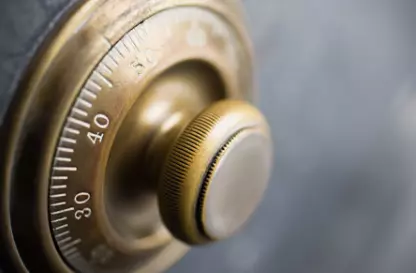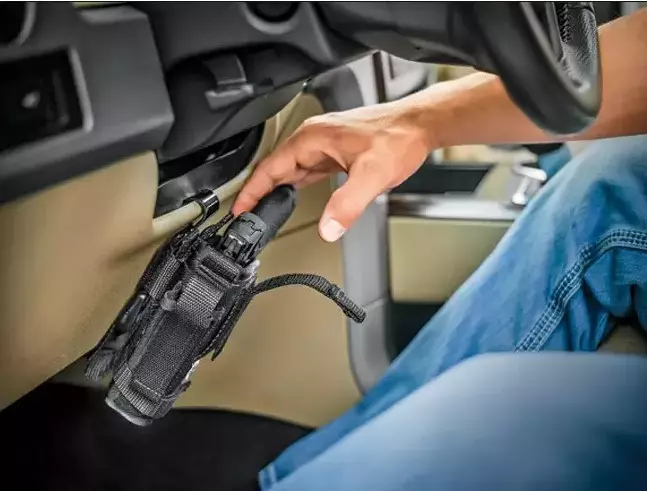How To Lubricate A Combination Safe Lock?
Gun Safes are usually used to protect valuable items. Handguns, rifles, ammunition, and other weapons are usually kept in these gun safes for safety reasons.
However, certain mechanisms used in these safes must be properly lubricated to ensure that the mechanism works well. A good example is the Lubrication of the Safe Lock.
This article will talk about How To Lubricate A Combination Safe Lock to ensure smooth operations in gun safes.
The application of oil or grease on your safe locks is an important part of maintaining your firearms. It’s also one of those easy-to-do tasks you can do yourself without any formal training.
How often to oil your gun-safe locks? How much to use? How do you apply the oil properly on the lock’s mechanism? How do you choose a lubricant to use on your firearms, locks, and other mechanisms?
These are some questions that we will try to answer in this article. Let’s start reading!
What is a safe combination lock?
A combination safe lock, often called simply a combination lock, uses numbers or letters that can be changed to open the safe. A keypad on the outside of the door allows you to enter your code to open it.
Safe locks are different than digital locks found in most safes used by law enforcement and military forces, which use codes instead of combinations.
These storage units usually do not need any additional lubrication because they are built with very tight tolerances (clearance) between moving parts or surfaces that allow them to operate without binding or seizing.

Types of oil used for lubrication
The best way to lubricate your firearms is by using 2-in-1 or 3-in-1 oil. These oils have both penetrating and displacing properties in one container. Penetrating oils can quickly get into small spaces, while displacement oils will flush away other types of greases, leaving no trace behind.
Another type of oil that is ideal for disassembling and reassembling screws and bolts is sewing machine oil. This oil is usually colorless and odorless. It is suitable for lubricating locks because of its low coefficient of friction and strong corrosion resistance.
Suppose you need to use grease on your gun safe lock-such as Teflon Grease-apply just a drop to each screw before reassembling the lock. Clean the excess grease from around the screws after every application.
How to apply the oil to a safe lock
Before lubricating a lock, make sure the safe is unlocked, and all guns are removed from the safe. How you can do this would depend on your model of gun safe:
- Apply light machine or penetrating oil around the edges of the locking mechanism, including the combination dial, and anywhere else where it is rough, uneven, or pitted metal.
- Using a cotton swab or a cotton ball, apply a small amount of oil.
- Rotate the combination dial several times until you have oil evenly dispersed around it.
- Cycle the locking mechanism back and forth a few times to let the oil work into any seams between parts that may have been causing friction.
- Re-apply more penetrating lubricant as needed if the safe is still difficult to open after one cycle of opening and closing.
- Try one final time and see if the safe is open. Let the oil sit for several hours before testing again, just if any of the pieces need more time for the lubricant to work its way into their joints.
- Test that you can still cycle through all of the possible combination settings without too much force. If there is still resistance, re-apply the penetrating lubricant and try opening and closing it again until it opens easily without too much difficulty.
How often should lubricating be done?
Many manufacturers recommend after every three months; it is ideal for lubricating the gun safe for increasing its efficiency.
How much lube should be used?
Use a few drops. Some lock lubricants come in spray cans, but the problem with these sprays is that they can drip and get into other components or locks inside your safe, which may damage them in the long run.
How to open a combination safe if it’s too dry?
A lot of gun owners have experienced this kind of problem-the combination fails when you enter the digits. This happens when moving parts start to seize or jam due to a lack of oil or grease, causing problems opening the safety box.
A few drops of oil should suffice to open the combination lock because too much may drip and get into other parts and cause problems.
Precautions used for lubrication.
No precautions are as important as those taken when lubricating a combination safe lock. The correct oil or grease must be used equally important to use this material correctly.
- When applying a dry lubricant, a very light coating should be applied with a piece of cloth or tissue paper. Too much will cause excess friction and wear, while too little may allow rusting, which requires scraping to renew.
- Before screwing down tightly, all moving parts of the lock must be oiled.
- Ensure that the lock fits correctly before commencing work. This may involve removing one part from within another, leaving enough space for working between them without interfering with their action.
- After applying oil or another lubricant, the parts must be tested to ensure smooth work. When adjusting or taking apart locks, precautions should be taken not to chip or break them by allowing the screws to fix them in place to bear against each other.
- By replacing worn parts and renewing old oil, a lock may last for many years. However, it is often necessary to clean off excess material at the end of work; otherwise, it will cause continuing deterioration.
- Before the lubricating combination, safe locks make sure you have all materials needed to complete the job properly before starting work.
Benefits of lubrication
The following are some benefits of lubricating gun safe locks:
1. Lubrication of gun safe can help reduce wear and tear on the lock.
2. Lubrication of gun safe will ensure that your guns remain in good condition for a long time.
3. Gun safes are usually not opened often, so it is important to keep them well-lubricated.
4. The best way to do this is by using a silicone spray or oil.
5. This should be done at least once every six months and more frequently if the weapon has been used extensively.
7) When choosing which type of lubricant to use, make sure it is compatible with metal (e.g., silicone spray or oil).
8) It’s also important that you don’t over-lubricate because this could cause damage inside the lock mechanism and prevent it from working properly
9) You should only apply enough lubricant needed for each individual part; too much will just get wasted! 10.) Make sure you clean off any excess lube before closing up your gun safe so as not to attract dust or dirt particles when closed up again.
How to keep the gun safe interior clean
- 1. Clean and dry your guns after they’ve been used.
- 2. Keep a weatherproof gun safe, with an interior made of stainless steel or other material to resist rusting.
- 3. Store ammunition in a different location than your firearms so it can’t be easily accessed by children or intruders.
- 4. Make sure the humidity inside your gun safe is at 50% or less, as this will keep mold from forming on any of your items.
- 5. Keep a dehumidifier inside the gun safe to help maintain low humidity levels
- 6. Keep only one firearm per shelf for easy access if you need it quickly during an emergency.
- 7. Keep your gun in a safe location, preferably in a lockbox.
- 8. Clean off any dirt or dust with an air compressor and cloth.
- 9. Fill the barrel of the gun with oil to prevent rusting.
- 10. Place silica gel packets within the case to absorb moisture.
- 11. Place desiccant packs inside your ammo box for extra protection against humidity.
Conclusion
Lubricating your combination safe lock will keep the tumblers moving freely and prevent them from sticking, which means you’ll be able to open it with ease.
There are many different types of lubricants available on the market, so make sure you choose one compatible with whatever material your lock is made out of – for example, if your lock uses a rubber sealant like silicone or graphite, then using oil could cause damage. It’s also important to consider the climate of your area (cold vs. warm).
You should also check your screws occasionally since these will loosen and need tightening again over time. For more information about proper care for your locks, don’t hesitate to get in touch with our team today!








